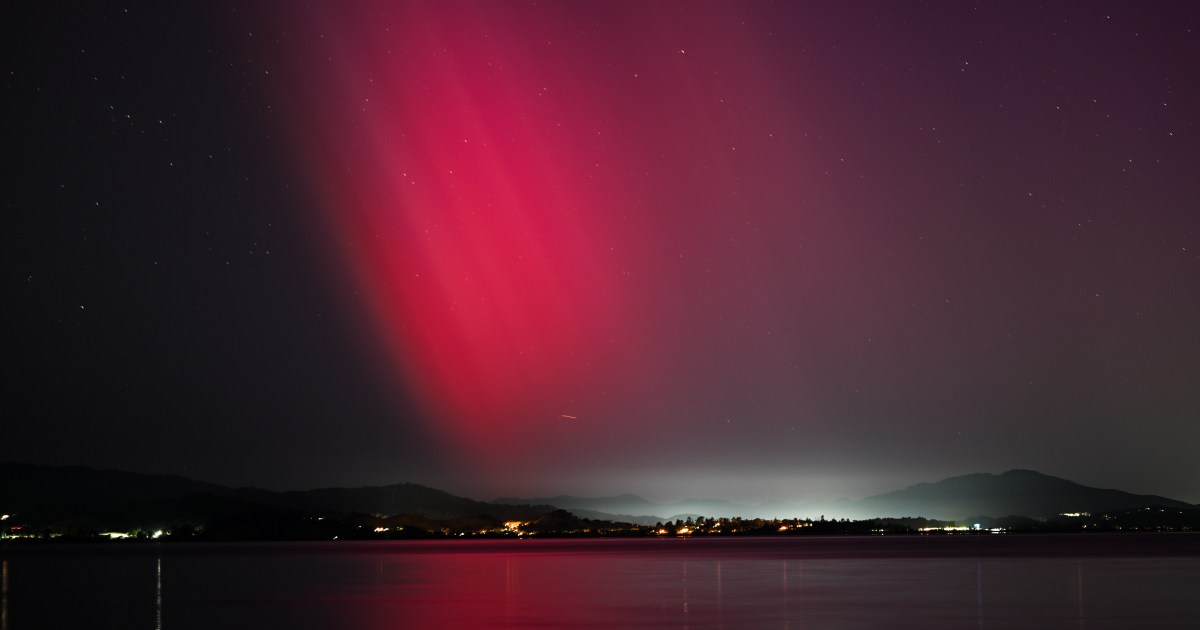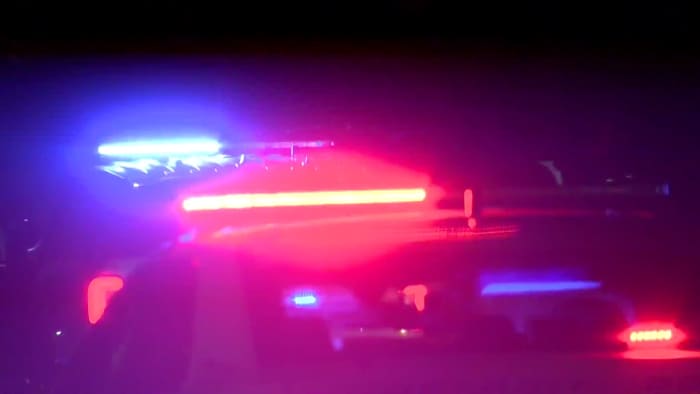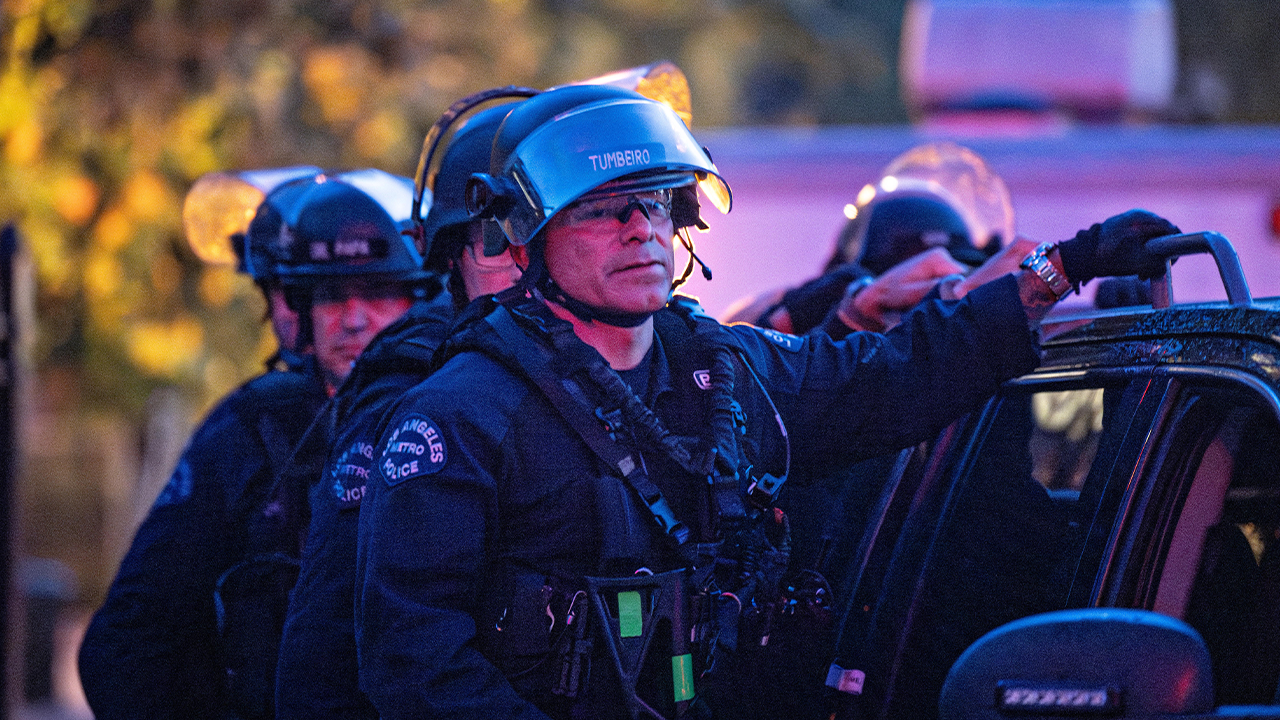Education
Opinion | The Wrong Way to Cut New York City’s Budget

After a decade-long spending spree and a devastating pandemic, New York City is now staring at three years of huge budget deficits, beginning with at least $4.2 billion in the year that starts in July of next year.
Mayor Eric Adams, rightly, is trying to wring some savings from the city’s $106 billion budget. But so far, he appears to be making some strange choices.
Among the most mystifying is a decision to shrivel the city’s free prekindergarten initiative by proposing a $567 million funding cut to the program and stopping its planned expansion. There are signs that the program is in need of attention: It has about 30,000 unfilled seats. The city also owes prekindergarten providers hundreds of millions of dollars in back pay, as Bloomberg reported on May 15, leaving many of them struggling to stay afloat. But rather than cut, New York City should increase its outreach and pay providers what they are owed. Poverty is on the rise in New York. This is no time to slash funding to a program that provides early education to 90,000 children across the city and could serve tens of thousands more.
Also on the chopping block in the mayor’s budget proposal: $5 million for a program that delivers meals for city seniors and $17 million for contractors that provide therapy, job placement and other social services for people in city jails. Frank Dwyer, a spokesman for the Department of Correction, said in a statement that the agency would provide the social services previously performed by contractors. But that could be difficult at the city’s jail complexes, which continue to suffer from violence and inmate deaths.
The cuts to these vital programs are part of an across-the-board search for savings through a 4 percent cut for nearly every city agency ordered by the mayor in April. In the 2024 fiscal year budget, which must be approved by June 30, the impact of many of those cuts on everyday New Yorkers might be relatively small. But with the deficit expected to increase to at least $6 billion in fiscal year 2026 and at least $7 billion in 2027, Mr. Adams will need a more targeted approach. Executing blanket cuts across city agencies in the coming years is almost certain to reduce core services for New Yorkers who need them the most.
A better way would be for the Adams administration to hunt more carefully for savings that have as little impact on residents as possible, ending programs that aren’t working while continuing to invest heavily in areas like housing and in programs that help vulnerable New Yorkers.
“It takes sleeves-rolled-up work,” Andrew Rein, the president of the Citizens Budget Commission, a nonpartisan budget watchdog group, told The Times. The City Council, which must approve the budget, has challenged the mayor’s budget cuts; its willingness to do so is a good thing.
Some city agencies that serve New Yorkers in poverty are severely understaffed and urgently need more investment. At one such agency, the Human Resources Administration, wait times for food stamps and other benefits are now often monthslong.
So what can be cut? One area for possible savings is reducing overtime worked by the city’s uniformed employees. New York City spent $1.56 billion on such overtime last year, according to a report from Comptroller Brad Lander. The New York Police Department accounted for $671 million, or 43 percent of that overtime.
The Citizens Budget Commission has suggested slashing administrative costs by consolidating the dozens of the city’s union welfare benefit and annuity funds.
The city’s Independent Budget Office has additional ideas, like ending $75 million in rental assistance to charter schools and increasing revenue by creating a civilian complaint program for vehicles that violate bike lanes. It also recommended hiring more tax auditors at the Department of Finance, a change the group said could add $165 million in revenue to the city’s budget every year.
Reports by New York’s budget watchdogs suggest the city’s economic outlook, while far from dire, is unsteady. As the nation heads into an uncertain economy, revenues in New York City are projected to continue to grow, but modestly. The city faces roughly $16 billion in costs from labor settlements in the coming years, and the mayor says it will have to spend at least $4.3 billion in the coming year alone to serve tens of thousands of migrants who have arrived from the southern border, though the Independent Budget Office says those costs are likely to be much lower. The $13.5 billion in federal stimulus aid that helped cushion the municipal budget during the pandemic is mostly gone.
Mr. Adams has asked for help from the White House to cover the costs of housing and settling those migrants. He’s right: Those costs should be covered by the federal government rather than borne by taxpayers in New York City or localities anywhere in the United States where members of this high-need population happen to settle. Hopefully, Gov. Kathy Hochul can help Mr. Adams make that case.
Pruning New York City’s nation-state-size budget is good fiscal policy. How Mr. Adams makes those cuts matters.

Education
Video: Police Use Pepper Spray on Protesters on G.W.U.’s Campus

new video loaded: Police Use Pepper Spray on Protesters on G.W.U.’s Campus
transcript
transcript
Police Use Pepper Spray on Protesters on G.W.U.’s Campus
Police officers arrested 33 pro-Palestinian protesters and cleared a tent encampment on the campus of George Washingon University.
-
“The Metropolitan Police Department. If you are currently on George Washington University property, you are in violation of D.C. Code 22-3302, unlawful entry on property.” “Back up, dude, back up. You’re going to get locked up tonight — back up.” “Free, free Palestine.” “What the [expletive] are you doing?” [expletives] “I can’t stop — [expletives].”
Recent episodes in Israel-Hamas War
Education
How Counterprotesters at U.C.L.A. Provoked Violence, Unchecked for Hours

A satellite image of the UCLA campus.
On Tuesday night, violence erupted at an encampment that pro-Palestinian protesters had set up on April 25.
The image is annotated to show the extent of the pro-Palestinian encampment, which takes up the width of the plaza between Powell Library and Royce Hall.
The clashes began after counterprotesters tried to dismantle the encampment’s barricade. Pro-Palestinian protesters rushed to rebuild it, and violence ensued.
Arrows denote pro-Israeli counterprotesters moving towards the barricade at the edge of the encampment. Arrows show pro-Palestinian counterprotesters moving up against the same barricade.
Police arrived hours later, but they did not intervene immediately.
An arrow denotes police arriving from the same direction as the counterprotesters and moving towards the barricade.
A New York Times examination of more than 100 videos from clashes at the University of California, Los Angeles, found that violence ebbed and flowed for nearly five hours, mostly with little or no police intervention. The violence had been instigated by dozens of people who are seen in videos counterprotesting the encampment.
The videos showed counterprotesters attacking students in the pro-Palestinian encampment for several hours, including beating them with sticks, using chemical sprays and launching fireworks as weapons. As of Friday, no arrests had been made in connection with the attack.
To build a timeline of the events that night, The Times analyzed two livestreams, along with social media videos captured by journalists and witnesses.
The melee began when a group of counterprotesters started tearing away metal barriers that had been in place to cordon off pro-Palestinian protesters. Hours earlier, U.C.L.A. officials had declared the encampment illegal.
Security personnel hired by the university are seen in yellow vests standing to the side throughout the incident. A university spokesperson declined to comment on the security staff’s response.
Mel Buer/The Real News Network
It is not clear how the counterprotest was organized or what allegiances people committing the violence had. The videos show many of the counterprotesters were wearing pro-Israel slogans on their clothing. Some counterprotesters blared music, including Israel’s national anthem, a Hebrew children’s song and “Harbu Darbu,” an Israeli song about the Israel Defense Forces’ campaign in Gaza.
As counterprotesters tossed away metal barricades, one of them was seen trying to strike a person near the encampment, and another threw a piece of wood into it — some of the first signs of violence.
Attacks on the encampment continued for nearly three hours before police arrived.
Counterprotesters shot fireworks toward the encampment at least six times, according to videos analyzed by The Times. One of them went off inside, causing protesters to scream. Another exploded at the edge of the encampment. One was thrown in the direction of a group of protesters who were carrying an injured person out of the encampment.
Mel Buer/The Real News Network
Some counterprotesters sprayed chemicals both into the encampment and directly at people’s faces.
Sean Beckner-Carmitchel via Reuters
At times, counterprotesters swarmed individuals — sometimes a group descended on a single person. They could be seen punching, kicking and attacking people with makeshift weapons, including sticks, traffic cones and wooden boards.
StringersHub via Associated Press, Sergio Olmos/Calmatters
In one video, protesters sheltering inside the encampment can be heard yelling, “Do not engage! Hold the line!”
In some instances, protesters in the encampment are seen fighting back, using chemical spray on counterprotesters trying to tear down barricades or swiping at them with sticks.
Except for a brief attempt to capture a loudspeaker used by counterprotesters, and water bottles being tossed out of the encampment, none of the videos analyzed by The Times show any clear instance of encampment protesters initiating confrontations with counterprotesters beyond defending the barricades.
Shortly before 1 a.m. — more than two hours after the violence erupted — a spokesperson with the mayor’s office posted a statement that said U.C.L.A officials had called the Los Angeles Police Department for help and they were responding “immediately.”
Officers from a separate law enforcement agency — the California Highway Patrol — began assembling nearby, at about 1:45 a.m. Riot police with the L.A.P.D. joined them a few minutes later. Counterprotesters applauded their arrival, chanting “U.S.A., U.S.A., U.S.A.!”
Just four minutes after the officers arrived, counterprotesters attacked a man standing dozens of feet from the officers.
Twenty minutes after police arrive, a video shows a counterprotester spraying a chemical toward the encampment during a scuffle over a metal barricade. Another counterprotester can be seen punching someone in the head near the encampment after swinging a plank at barricades.
Fifteen minutes later, while those in the encampment chanted “Free, free Palestine,” counterprotesters organized a rush toward the barricades. During the rush, a counterprotester pulls away a metal barricade from a woman, yelling “You stand no chance, old lady.”
Throughout the intermittent violence, officers were captured on video standing about 300 feet away from the area for roughly an hour, without stepping in.
It was not until 2:42 a.m. that officers began to move toward the encampment, after which counterprotesters dispersed and the night’s violence between the two camps mostly subsided.
The L.A.P.D. and the California Highway Patrol did not answer questions from The Times about their responses on Tuesday night, deferring to U.C.L.A.
While declining to answer specific questions, a university spokesperson provided a statement to The Times from Mary Osako, U.C.L.A.’s vice chancellor of strategic communications: “We are carefully examining our security processes from that night and are grateful to U.C. President Michael Drake for also calling for an investigation. We are grateful that the fire department and medical personnel were on the scene that night.”
L.A.P.D. officers were seen putting on protective gear and walking toward the barricade around 2:50 a.m. They stood in between the encampment and the counterprotest group, and the counterprotesters began dispersing.
While police continued to stand outside the encampment, a video filmed at 3:32 a.m. shows a man who was walking away from the scene being attacked by a counterprotester, then dragged and pummeled by others. An editor at the U.C.L.A. student newspaper, the Daily Bruin, told The Times the man was a journalist at the paper, and that they were walking with other student journalists who had been covering the violence. The editor said she had also been punched and sprayed in the eyes with a chemical.
On Wednesday, U.C.L.A.’s chancellor, Gene Block, issued a statement calling the actions by “instigators” who attacked the encampment unacceptable. A spokesperson for California Gov. Gavin Newsom criticized campus law enforcement’s delayed response and said it demands answers.
Los Angeles Jewish and Muslim organizations also condemned the attacks. Hussam Ayloush, the director of the Greater Los Angeles Area office of the Council on American-Islamic Relations, called on the California attorney general to investigate the lack of police response. The Jewish Federation Los Angeles blamed U.C.L.A. officials for creating an unsafe environment over months and said the officials had “been systemically slow to respond when law enforcement is desperately needed.”
Fifteen people were reportedly injured in the attack, according to a letter sent by the president of the University of California system to the board of regents.
The night after the attack began, law enforcement warned pro-Palestinian demonstrators to leave the encampment or be arrested. By early Thursday morning, police had dismantled the encampment and arrested more than 200 people from the encampment.
Education
Video: President Biden Addresses Campus Protests

new video loaded: President Biden Addresses Campus Protests
transcript
transcript
President Biden Addresses Campus Protests
President Biden defended the right of demonstrators to protest peacefully, but condemned the “chaos” that has prevailed at many colleges nationwide.
-
Violent protest is not protected. Peaceful protest is. It’s against the law when violence occurs. Destroying property is not a peaceful protest. It’s against the law. Vandalism, trespassing, breaking windows, shutting down campuses, forcing the cancellation of classes and graduations — none of this is a peaceful protest. Threatening people, intimidating people, instilling fear in people is not peaceful protest. It’s against the law. Dissent is essential to democracy, but dissent must never lead to disorder or to denying the rights of others, so students can finish the semester and their college education. There’s the right to protest, but not the right to cause chaos. People have the right to get an education, the right to get a degree, the right to walk across the campus safely without fear of being attacked. But let’s be clear about this as well. There should be no place on any campus — no place in America — for antisemitism or threats of violence against Jewish students. There is no place for hate speech or violence of any kind, whether it’s antisemitism, Islamophobia or discrimination against Arab Americans or Palestinian Americans. It’s simply wrong. There’s no place for racism in America.
Recent episodes in Politics
-

 News1 week ago
News1 week agoPolice enter UCLA anti-war encampment; Arizona repeals Civil War-era abortion ban
-

 Politics1 week ago
Politics1 week agoThe White House has a new curator. Donna Hayashi Smith is the first Asian American to hold the post
-

 News1 week ago
News1 week agoSome Florida boaters seen on video dumping trash into ocean have been identified, officials say
-

 Education1 week ago
Education1 week agoVideo: President Biden Addresses Campus Protests
-
)
) Movie Reviews1 week ago
Movie Reviews1 week agoThe Idea of You Movie Review: Anne Hathaway’s honest performance makes the film stand out in a not so formulaic rom-com
-

 World1 week ago
World1 week agoUN, EU, US urge Georgia to halt ‘foreign agents’ bill as protests grow
-

 World1 week ago
World1 week agoIn the upcoming European elections, peace and security matter the most
-

 World1 week ago
World1 week agoArizona Senate repeals near-total 1864 abortion ban in divisive vote














